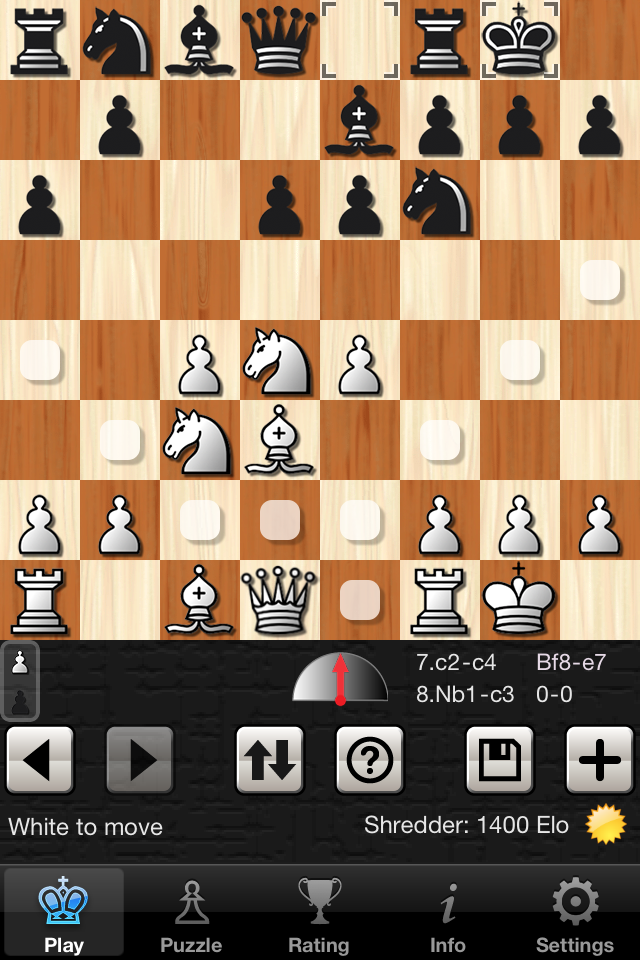

“‘Swarm’ is in fact much better than ‘Random Move.'”Īnd one more successful strategy is an algorithm that prioritizes four specific kinds of move (in this order): to checkmate, check, capture a piece, or push into its opponent’s territory.īut there are other terrible ideas - like an algorithm which seeks to mirror its opponent’s pieces, or to move all of its pieces to the other side of the board. “If you have a preference to attack the opponent, you’re going to accidentally checkmate it sometimes.” In the video, Murphy reveals that among the bad chess algorithms, this one is surprisingly not-as-bad. This sometimes leads to Huddle’s king being forced to follow its own pawns across the board, wherein at least a few cases its pawn then accidentally promoted into more powerful pieces and inadvertently checkmated the opposing king.īut more often, it works the other way. There was also two algorithms he named “Huddle” and “Swarm” - in which one automated player searches for moves keeping its pieces close to its own king, while the other searches for moves placing its pieces near its opponent’s king. If you find my intricate 42min video about 30 weird chess algorithms competing in a tournament of fools in order to assess my program that plays chess without knowing what pieces are on the board to be boring, then it is because you do not understand art: “They have a preference, but it doesn’t really have to do with winning.” In fact, they’re both just a little bit worse than the algorithm that chooses its moves at random. (Its opponent? An algorithm which preferred placing its pieces on oppositely-colored squares.) In the end, they both played pretty badly. One had a preference for placing its pieces on the white squares when it’s playing white, and on black squares when it’s playing black.

Then he set out to build other bad chess-playing algorithms, so he could compare their relative performance… “But the natural question is how not-very-good is it?” Testing it against chess-playing programs proves that yes, it loses with great regularity - as in, “every single time.”

“I like playing against it, because it’s not very good,” Murphy says in the video. But to get around that, Tom created a program that generates a list of possible moves, ranked in order of preference - from which the first legal move will be chosen. Yes, there’s a possibility that the computer’s king is in check - at which point pretty much every move is illegal except a move which leads your king to safety. Of course, the computer wouldn’t be provided with the moves leading up to a position either. But what’s the equivalent for a computer? Telling it where pieces are located but not which pieces they are (or even what color)… In Murphy’s initial game, human players are blindfolded, forcing them to remember where the pieces are. is easy with lexicographic orderings and time travel has some 20 citations in ‘real’ academic research).īut this was the year that Murphy turned his attention to chess. Murphy brags proudly that some of his past presentations there involved ridiculous investigations that were “indistinguishable from ‘real’ research (for example The first level of Super Mario Bros. But this year he decided to return again for the April Fool’s Day conference - and again, contributed some humorous research of his own.
#Algorithm for chess program software#
Sponsored by the “Association for Computational Heresy,” it was a kind of satirical special interest group devoted to a fictitious researcher named “Harry Quizmaster Bovik,” and including a call for goofy papers on topics like “artificial stupidity.”įor the last 11 years, Murphy’s been a senior staff software engineer at Google (in its Pittsburgh offices). at Carnegie Mellon - which was the same year the students began holding the annual SIGBOVIK conference on April Fool’s Day. He tells us that in 2007 he defended his computer science Ph.D. Murphy has the brainpower to pull it off. “It’s my idea of fun…” Murphy says in a humorous video describing the experiments. This year a Pennsylvania software engineer who calls himself Tom Murphy VII decided to create some laughably bad chess-playing algorithms using everything from machine learning and neural networks to a gratuitous amount of CPU cycles - and then pitted the bad algorithms against each other to create a “tournament of fools.” What happens when we apply cutting-edge modern technologies to the age-old game of chess? And what happens when a bored geek with a surplus of computing power conducts his own weird home experiments on the game?


 0 kommentar(er)
0 kommentar(er)
